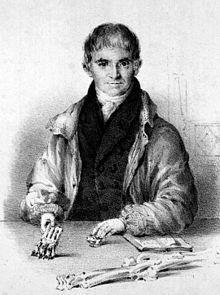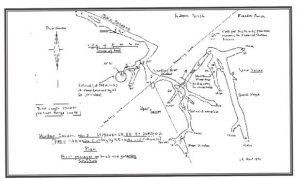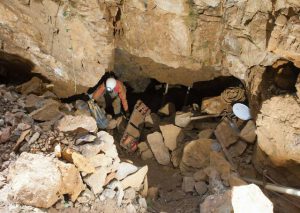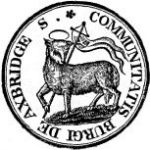The Search for the Lost Cave of Hutton – written by Madeleine Roberts for Retrospect (with some additional references and illustrations by EF)
At the Society’s November meeting Alan Gray, chairman of the Axbridge Caving Group, captivated his audience with his enthusiasm for the underground world that is the Mendip cave system. Alan attempted to unravel some of the mystery and confusion that has grown up around one particular cave on the western edge of Mendip, namely Hutton Cave in Canada Coombe.
Discovered by ochre miners in the 1650s it was not until a hundred years later that the Rev. Alexander Catcott, vicar of the Temple Church in Bristol, showed an interest and discovered in the cave what he reported to be a veritable charnel house of bones. The discovery and the realisation that many of the bones were from animals that came from more tropical regions than Somerset led Catcott to speculate that the bones might have been deposited as a result of Noah’s flood. He held to the belief, current at the time, that the world was only 6000 years old and his discoveries led him in 1761 to publish his ‘Treatise on the Deluge’.

Much later in the 1820s this treatise was to arouse the interest of the Rev. David Williams of Bleadon and, together with William Beard of Banwell Bone Cave fame, he explored the area. Bones were collected from a cave and reported to include elephant tusks and the bones of tigers, hyaenas, wolves, bears and horses. In 1824 when ochre mining ceased, the entrance was back-filled, although Rutter reported on its existence in his ‘Delineations of Somerset’ published in 1829.

The site of the cave was therefore lost among the more than fifty ochre pits in Canada Coombe until 1970 when the Axbridge Caving Group took an interest. The 1970s saw the ACG opening up Bleadon Cavern and several new entrances to it and then, in 2007, a second cave, Upper Canada Cave, was discovered.
In 2012, with the permission of the land owner, Bernard Cole, a mini digger was brought in to speed up the process and this led to the discovery of a further complex of passages. The question remains, however, whether the original cave has been rediscovered or not. Reports of the early visits are not always compatible with each other or with modern observations of the cave system and Alan is now wondering whether there were in fact not one but two caves. He tentatively suggested that Bleadon Cavern might be the cave visited by Catcott in the eighteenth century and Upper Canada Cave as the lost Cave of Hutton visited by Williams and Beard in the nineteenth century.

The puzzle is not helped by the fact that none of the original bones have been located. We know that Catcott’s bones were bequeathed to Bristol Library, from where they were later moved to Bristol Museum. Sadly these bones did not survive the German bombing raids of World War 11. The fate of the bones collected by Williams and Beard is unknown but they may have graced the cabinets of Victorian collectors and be still in existence somewhere but unprovenanced.
To add to the confusion, some two hundred bones have been collected in recent times but all have been identified as being horse bones of no great age. It seems unlikely that if the original bones were as numerous as described by Catcott that they would all have been removed. Certainly in the case of Banwell Bone Cave large numbers remain to delight us to this day. Further questions now arise from these more modern horse bones – how did they get there, when and why?
Alan’s enthusiasm for the subject has not yet run its course. He has further underground passages to explore and lines of enquiry to follow up before he commits his pen to paper and writes another book. It was presumably all the narrow passages left to explore that caused him to decline the offer of home-made cake later in the evening. What dedication!
After his talk Alan showed us a short film, a fly-over of Mendip and North Somerset, locating all the known caves and features of archaeological interest in the area. It was a fascinating film giving us a bird’s eye view of the beautiful landscape that we all know so well and in which we are privileged to live.
Additional Notes: The bones found by Williams and Beard are in fact in the SANHS Quaternary Mammals collection
Catcott’s description of the bones he found is in a footnote starting on p.360 in his Treatise on the Deluge:
Rutter’s book is available from local libraries.
Maps of the various caves can be seen at the Mendip Cave Registry
Various articles have been written about caves at Hutton and Bleadon some of which are listed below:
Darkness Below UK
Article on Banwell Bone Caves by David Bromwich published by SANHS – linked here
Bristol Exploration Club
UBSS
